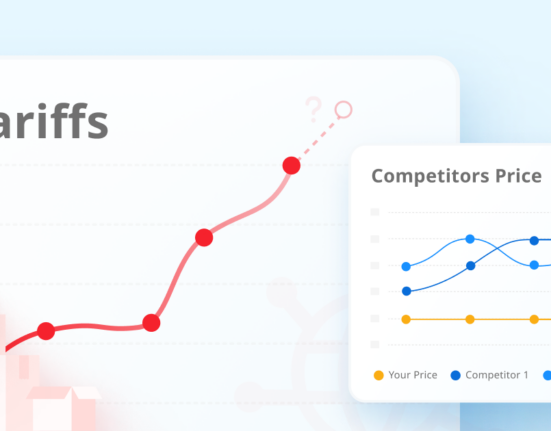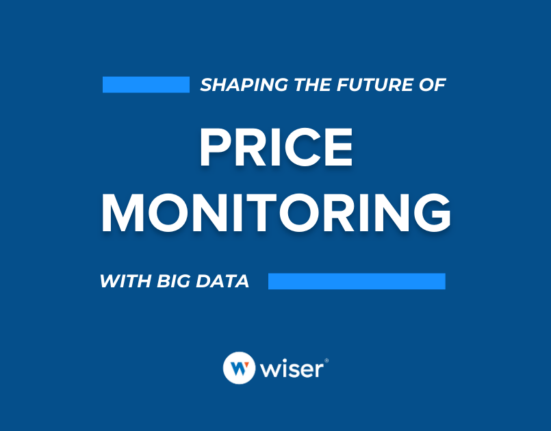Navigating Customer Engagement, Competitive Pressures & Analysis Paralysis
Driven by rapid technological advancements and shifting consumer behaviors, the traditional reactive approach to customer engagement in retail is increasingly proving inadequate. In this post, we delve into some of the critical challenges that brands and retailers face as they strive to effectively engage with the new, omnichannel shopper. At Wiser, we continue to observe significant cross-organizational visibility gaps, particularly between online and brick-and-mortar channels, along with an overwhelming amount of analysis paralysis. Additionally, competitive pressures are intensifying. Before discussing strategic solutions, this post aims to provide a deeper insight into these challenges, highlighting their complexities and implications.
The influence of the omnichannel shopper is profound—they spend less time browsing and have more tools at their disposal to evaluate whether to purchase your product:
- Lost Sales Opportunities: Notably, U.S. retailers suffer approximately $48 billion annually in lost revenue due to stock outages.
- Squeezed Product Margins: Inefficient pricing and supply chain management result in nearly 20% of customer orders yielding negative margins.
- Poor ROI on Promotions: A staggering 74% of consumer-packaged goods (CPG) trade promotions do not break even, indicating a misalignment between promotional activities and consumer expectations.
Addressing Visibility Gaps to Mitigate the Decision Point Disadvantage
The decision point is the critical moment when a shopper evaluates all available information and decides whether to make a purchase. Your goal is to sway that decision in your favor.
One of the most formidable barriers in modern retail is the “visibility gap.” This term describes the critical shortfall in capturing and understanding comprehensive data across multiple retail channels, crucial for optimizing product positioning, conducting competitive analysis, and achieving a unified view of shopper perceptions.
These visibility gaps manifest distinctly across both in-store and online channels, each presenting unique obstacles:
- In-Store Challenges: Brands frequently find themselves without the consistent and closer-to-real time data needed for effective product placement and performance analysis. A persistent delay in the feedback loop—from in-store promotions and price changes to their impact on sales, for instance—means that by the time brands receive the critical in-store information they need, it is often too late to implement effective changes.
- Online Challenges: Brands and retailers alike frequently struggle with maintaining consistency in product information, pricing, and availability compared to their physical counterparts, leading to customer confusion and diminished brand trust.
The implications of these gaps are obvious: they not only hinder informed decision-making but also delay necessary strategic responses to market shifts and evolving consumer preferences.
Analysis Paralysis: Navigating Through Data Overload
In the age of big data, the challenge is no longer in gathering information but in managing, interpreting, and acting upon it. Retailers and brands often find themselves overwhelmed by the volume of data at their disposal, leading to analysis paralysis—a state where decision-making is crippled by uncertainty and the complexity of data handling.
Key challenges include:
- Data Overload: Distinguishing crucial data points from the noise is a major hurdle, compounded by the question of data accuracy, relevance, and usability.
- Source Reliability: The plethora of data sources adds another layer of complexity, making it difficult to identify trustworthy information and prioritize actions accordingly.
- Linking Data to KPIs: Often, there is no clear method to correlate the vast amounts of data collected with specific key performance indicators, complicating the assessment of strategy effectiveness and necessary adjustments.
A structured approach to data management is required to overcome these challenges, one that emphasizes not just the collection but the effective curation and synthesis of data to guide actionable insights.
The Cost of Inaction: Vulnerabilities in Consumer Decision Moments
Each moment a consumer decision (to buy or not to buy) isn’t effectively influenced or captured represents a critical vulnerability for your business, potentially leading to not just lost sales but also long-term damage to brand loyalty and market position. When a shopper opts for a competitor’s product at the last minute due to perceived better value or quality, the impact extends beyond a single lost sale. It also diminishes the perceived value of your offerings. Furthermore, pricing strategies that fail to dynamically reflect market conditions can leave significant revenue on the table, negatively affecting overall profitability. Similarly, if your brand cannot maintain a favorable image or meet evolving customer expectations, you risk a gradual decline in shopper loyalty and preference.
Competitive offers that outshine your own can quickly divert potential sales, reducing your market share. This scenario is particularly damaging in a retail environment where speed and agility in response to market changes dictate success. Each of these vulnerabilities, if not addressed proactively, contributes to an erosion of both the financial stability and strategic positioning of your business. It is therefore crucial to act quickly and intelligently, employing strategies that preemptively address these vulnerabilities to transform potential losses into gains. By enhancing data analytics, refining promotional strategies, and ensuring a responsive, customer-centric approach, retailers can not only safeguard but also significantly enhance their competitive edge.
This proactive approach aims not just to mitigate losses but to actively cultivate consumer engagement and loyalty, ensuring that every decision point becomes an opportunity to affirm your brand’s value and appeal.
It’s Time to Guide the Consumer Journey, Not Just Follow It
Securing a decision point advantage in today’s market requires a shift from merely reacting to consumer behaviors to actively guiding them. This proactive strategy begins with establishing a strong foundation:
- Consistent and Holistic Visibility: Keeping a vigilant eye across all channels ensures that products are positioned effectively to capture sales, regardless of where the consumer decides to engage.
- Precise Data Coverage: Access to detailed, high-quality data allows for rapid identification of trends and timely strategic adjustments.
- Category-Wide Intelligence and Prescriptive Insights: These tools not only illuminate competitive dynamics and product performance but also prescribe specific actions that can directly influence consumer purchasing decisions.
- Adaptable Configuration: Customizing solutions to fit the unique mix of products, competitors, channel strategies, and goals ensures that strategies remain relevant and impactful.
By laying this foundation, brands not only follow but actively direct the consumer journey, transforming potential challenges into definitive competitive advantages. In doing so, they ensure that every consumer decision moment is not a point of vulnerability but a strategic opportunity to affirm the brand’s value and enhance its market position.
Watch this video to learn more on how to gain the decision point advantage: Win the Moment Shoppers Choose to Buy









